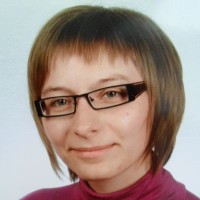Asymptotic behavior of generalized transport models on networks
Introduction
A vital problem in modelling real life systems is the need to strike a balance between maintaining the simplicity of the mathematical model and, simultaneously, capturing the dynamical features of the system. The main aim of this project is to create improved network models by including interactions along the edges. I also performed a comparative analysis on the original and improved models.
Method
There are two models that can describe relationships between groups of organisms – one based on ordinary differential equations and another based on transport equations with properly chosen boundary conditions. In order to compare the solutions of these models, I used a small parameter method. On the basis of observations of a theoretical model of genes’ mutation, a generalized model was defined and then analyzed using semigroup and graph theory.
Results
Three main theorems concerning the existence of solutions to the generalized problem, its graphical display, and idea of asymptotic state lumping were proven. One result has already been published.
Conclusions
Even if the relations between groups of species cannot be presented in a graph, the situation can be described by a system of equations. The model given by ordinary differential equations is sufficient when the general macroscopic description is of interest, or the density of the described feature of the organisms is only a small perturbation from a constant. Otherwise, it is reasonable to use the full microscopic model — given by a transport equation with proper boundary conditions — for the macroscopic system. This describes the microscopic behavior but also provides macroscopic features of the system, like the total mass of organisms.
References
[1] Banasiak J, Namayanja P (2014) Asymptotic behavior on reducible networks. Networks and Heterogeneous Media, 9, 197-216.
[2] Kramar M, Sikolya, E (2005) Spectral properties and asymptotic periodicity of flows in networks. Mathematische Zeitschrift, 249, 139–162.
[3] Bang-Jensen J, Gutin G, (2007) Digraphs Theory, Algorithms and Applications. 183-184. Springer Verlag.
[4] Rotenberg M (1983) Transport theory for growing cell populations. Journal of Theoretical Biology, 103, 81-199
[5] Arendt W, Grabosch A, Greiner G, Groh U, Lotz H P, Moustakas U, Nagel R, Neubrander F, Schlotterbeck U (1986) One-parameter Semigroups of Positive Operators. Lecture Notes in Math., vol. 1184, Springer-Verlag.
[6] Engel KJ, Nagel R (2000) One-parameter Semigroups for Linear Evolution Equations, Springer-Verlag.
Supervisors
Jacek Banasiak, University of KwaZulu Natal, South Africa
Alexey Davydov, Advanced Systems Analysis Program, IIASA
Note
Aleksandra Falkiewicz of the Lodz University of Technology, Poland, is a citizen of Poland and was self-funded during the SA-YSSP.
Please note these Proceedings have received limited or no review from supervisors and IIASA program directors, and the views and results expressed therein do not necessarily represent IIASA, its National Member Organizations, or other organizations supporting the work.

CONTACT DETAILS
Principal Research Scholar Exploratory Modeling of Human-natural Systems Research Group - Advancing Systems Analysis Program
Principal Research Scholar Systemic Risk and Resilience Research Group - Advancing Systems Analysis Program
Principal Research Scholar Cooperation and Transformative Governance Research Group - Advancing Systems Analysis Program
Further information


